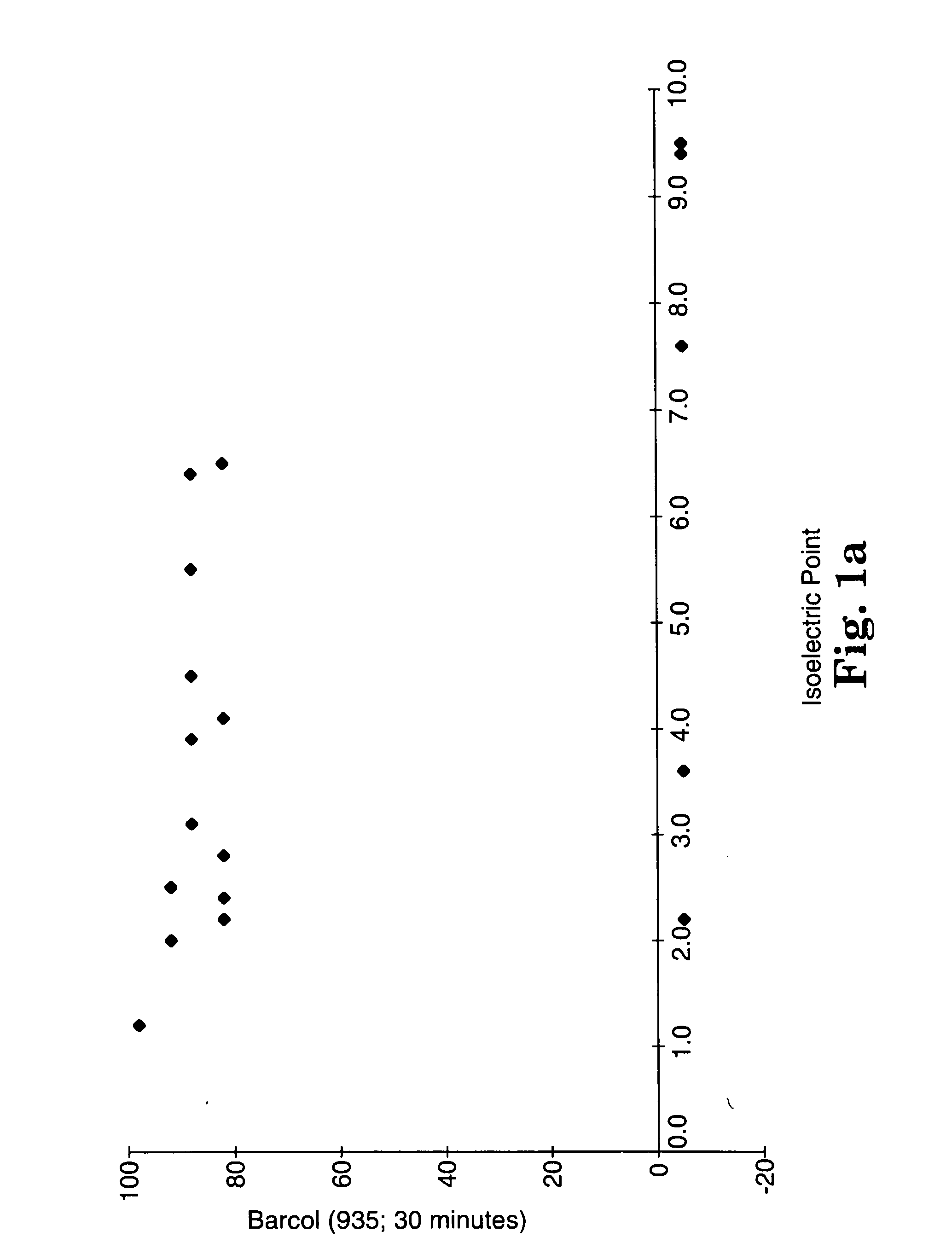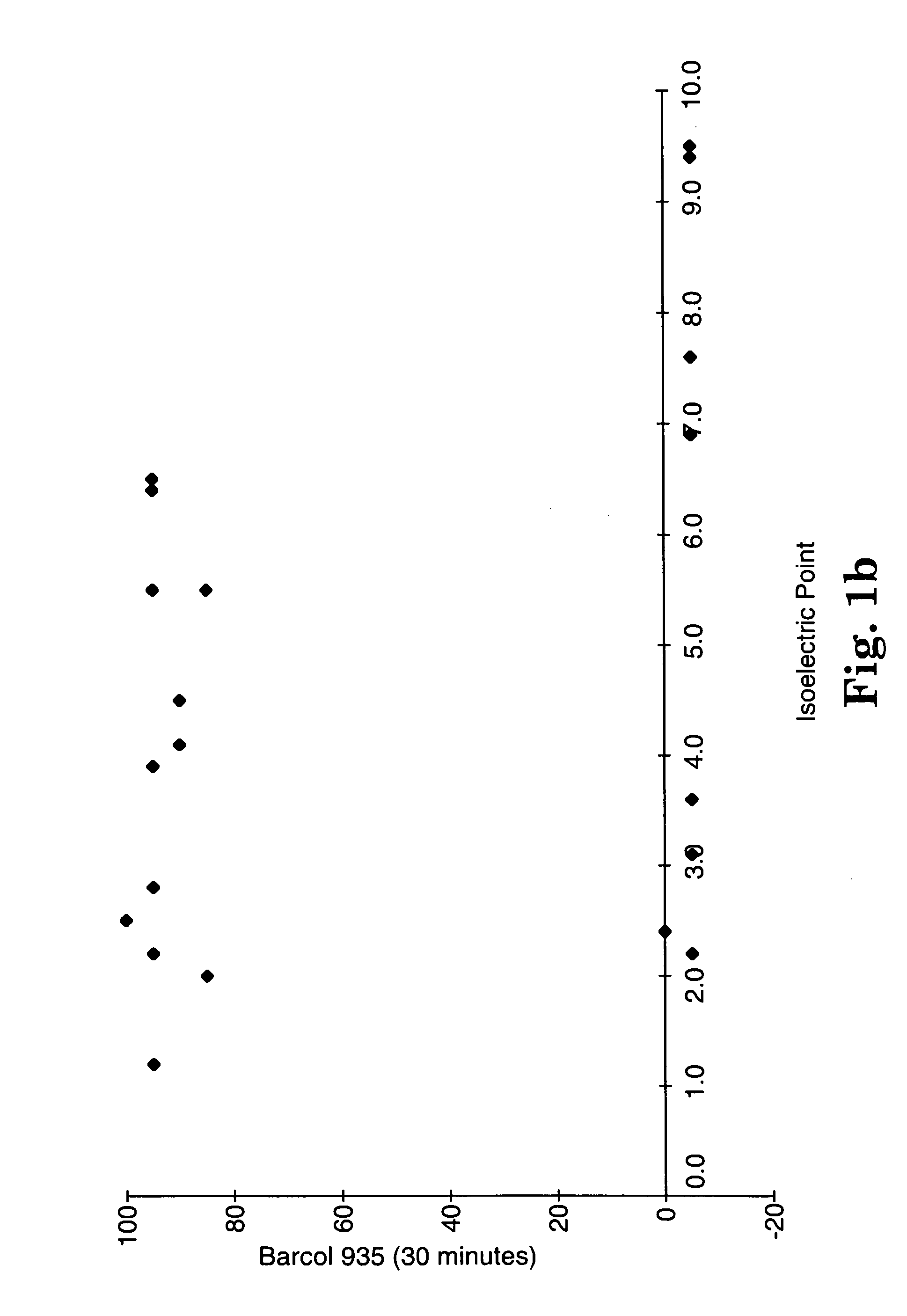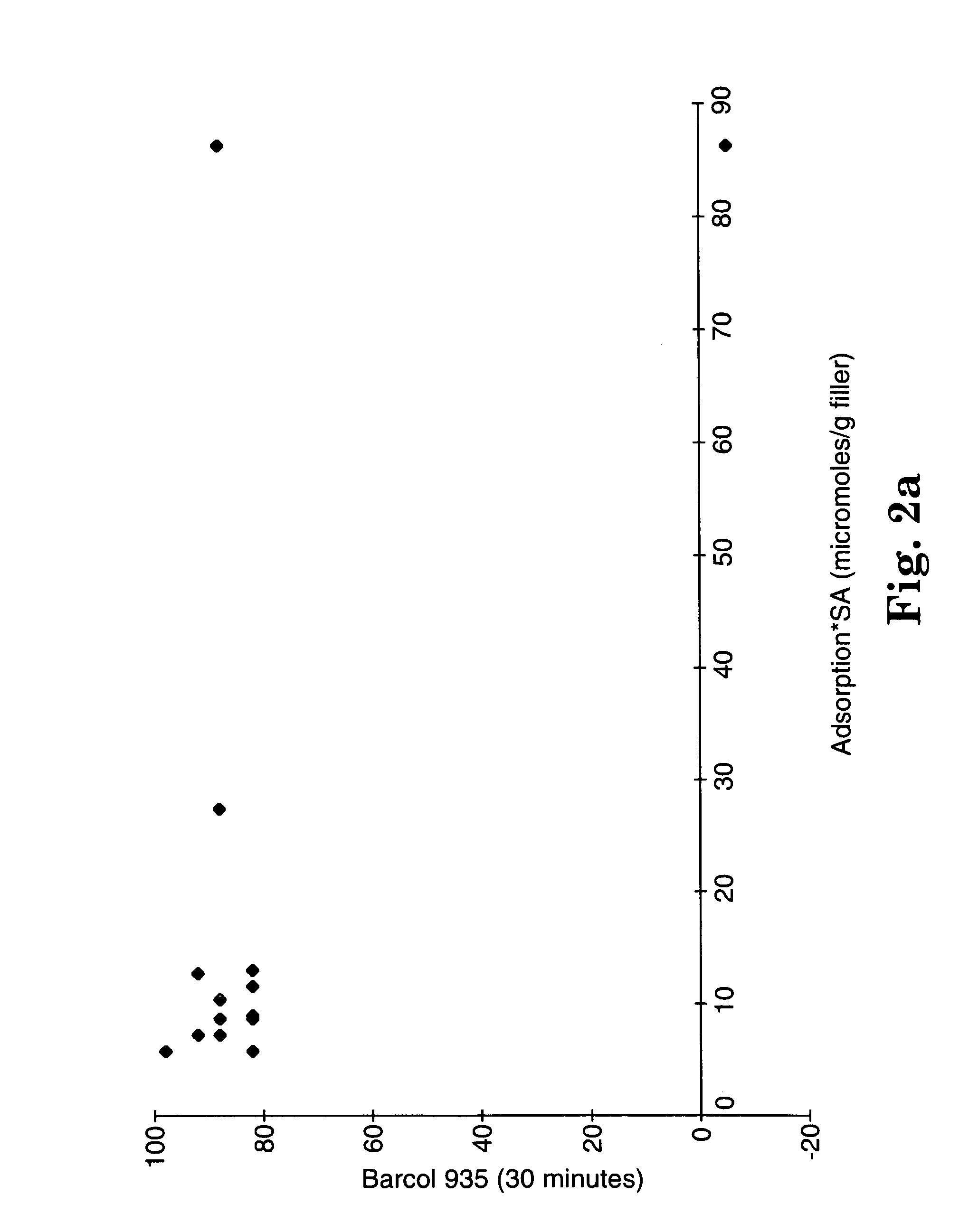Radiopaque cationically polymerizable compositions comprising a radiopacifying filler, and method for polymerizing same
a radiopaque and composition technology, applied in the field of polymerizing radiopaque compositions, to achieve the effects of low opacity, high clarity and low surface area
- Summary
- Abstract
- Description
- Claims
- Application Information
AI Technical Summary
Benefits of technology
Problems solved by technology
Method used
Image
Examples
examples
A. Hardness
[0139] The hardness of each composite following polymerization provides a measure of whether or not any particular filled composition inhibits or suppresses cationic polymerization. Two Barcol Hardness meters (models GYZJ-934-1 and GYZJ-935; Barber Coleman, Inc., Loves Park, Ill.) are used. These meters are monitored for performance consistency using a set of calibration disks provided with the meter.
[0140] Each prepolymerized composite is packed into a 5 mm diameter spherical cutout in a 4 mm deep Delrin mold. Mylar film is used as a liner on each side of the mold to ensure that the mold is filled completely, and that the sample is flush with the mold surface. The sample is then exposed to heat or actinic radiation to initiate polymerization.
[0141] Each sample is tested following polymerization using the two meters by pressing the tip of the tester firmly against the composite surface in a smooth, flat area of the sample. Two readings are taken at the...
examples 1-4
[0189] These examples demonstrate the use of various screening tests to select radiopacifying filler / resin / initiator combinations that, upon polymerization, form a polymerized composition having a Barol hardness, measured according to Test Procedure A using the GYZJ-935 meter, of at least 10 within 30 minutes following initiation of the cationically active functional group at a reaction temperature of 25° C. The screening tests were developed by examining the interaction of both radiopacifying and radiolucent fillers with various cationically polymerizable compositions. The fillers used in these examples were prepared as follows:
Filler (a)
[0190] Filler sample (a) was prepared by heating Raysorb™ T3000 glass (ESS-Tech, Essington, Pa.) in a furnace at 600° C. for 18 hours. Raysorb™ T3000 is a barium aluminoborosilicate glass which according to the vendor, contains 33% barium oxide.
Filler (b)
[0191] Filler sample (b) was Raysorb™ T3000 as received from the manufacturer.
Filler (c...
example 1
[0216] This example demonstrates that the isoelectric point may be used as a screening test. Isoelectric points for various filler compositions were determined according to Test Procedure B. Samples for hardness testing were prepared at 50% (w / w) and 70% (w / w) filler loading according to the general procedure described above. The resin in each case was Resin B2. Samples were cured with visible light using a 3M Visilux 2™ light. The sample was irradiated by placing the lamp flush against the composite surface (covered with Mylar) for 120 seconds (60 seconds on both top and bottom). The composite was placed against a mirror during curing.
[0217] Hardness was evaluated according to Test Procedure A. The results are summarized in tabular form in Tables 3A and 3B. “No cure” meant that the composite did not register on either of the two hardness meters, i.e., when the Mylar film was removed from the mold, the uncured resin pulled away with the film or was easily penetrated. The results us...
PUM
| Property | Measurement | Unit |
|---|---|---|
| atomic number | aaaaa | aaaaa |
| atomic numbers | aaaaa | aaaaa |
| temperature | aaaaa | aaaaa |
Abstract
Description
Claims
Application Information
 Login to View More
Login to View More - R&D
- Intellectual Property
- Life Sciences
- Materials
- Tech Scout
- Unparalleled Data Quality
- Higher Quality Content
- 60% Fewer Hallucinations
Browse by: Latest US Patents, China's latest patents, Technical Efficacy Thesaurus, Application Domain, Technology Topic, Popular Technical Reports.
© 2025 PatSnap. All rights reserved.Legal|Privacy policy|Modern Slavery Act Transparency Statement|Sitemap|About US| Contact US: help@patsnap.com



